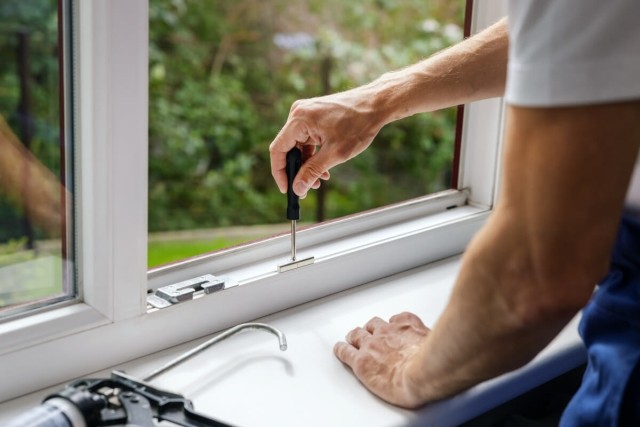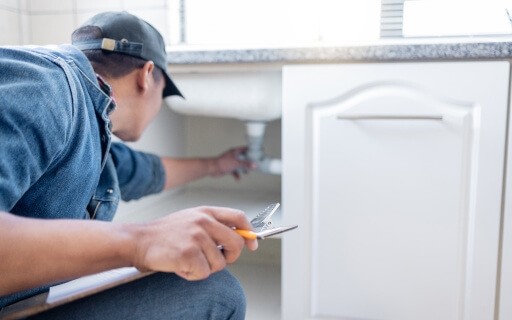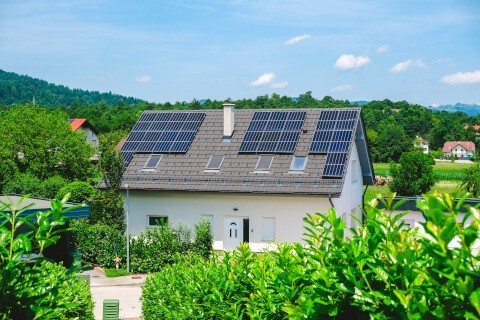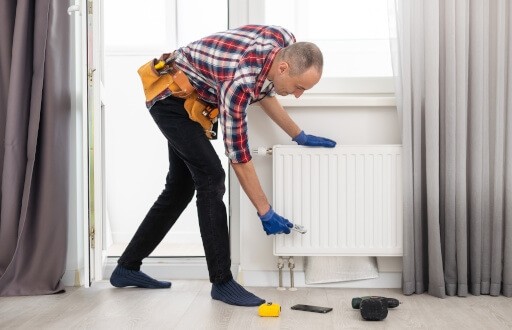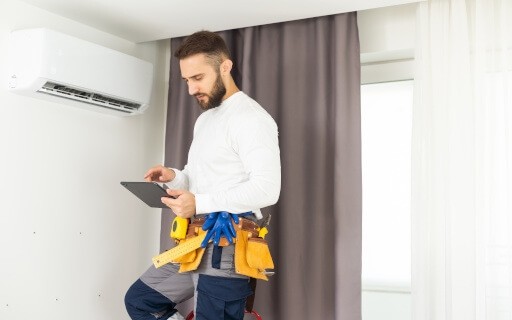Turnovers are a fact of life for landlords, and each time you have a vacancy you have a number of maintenance tasks to do to get it ready for the next renter. It's a good idea to make a checklist of these jobs to help you plan your schedule and your budget.
Prioritize the difficult jobs, especially the ones that affect safety, code compliance, and hygiene. As you run through your list, keep an eye on extra cosmetic improvements that will help your property stand out in the rental market. Here's a list of what to do.
1. Do a deep cleaning
A rental unit needs cleaning after every tenancy ends. It's one of the most basic maintenance tasks. In particular, you need to do the following:
- Deep-clean the bathrooms.
- Wash the floors and shampoo the carpets.
- Deep-clean the kitchen, including the oven, refrigerator, and inside the cabinets. If you have shelf liners in the cabinets, this is a good time to change them.
- Wash the windows. Sparkling windows make the unit more attractive to potential renters.
- Get rid of any mold you find in the bathrooms, kitchen, or basement by scrubbing it with soap and water. If any area of the house has excessive mold, look for the cause and correct it. It may be a roof or plumbing leak.
- Deodorize. Painting the walls helps with this, and so does burning incense, diffusing essential oils, and deploying bowls of baking soda where odors are particularly strong.
2. Check the smoke alarms
Checking the smoke alarms is one of the maintenance tasks that's definitely easier to do when the property is vacant. Push the test button on the front of every smoke alarm to make sure the alarm sounds. You might want to wear ear plugs when doing this. Replace any unit that fails the test. If the previous tenants stayed for several years, this is the best time to change all the batteries to ensure you don't get a call from your new tenants to fix a beeping smoke alarm.
3. Check the plumbing and electrical systems
Taking the time to correct problems with the water and electrical systems now means you won't have to respond to calls about those problems from the new occupants.
- Run all the faucets, both hot and cold, to make sure the water pressure is normal. Low pressure at a fixture usually means it's clogged with minerals and needs cleaning. Low pressure everywhere means you have a plumbing problem.
- Flush the water heater. If the hot water has a yellowish tinge, the temperature is too low. If you hear popping sounds from the water heater, it's time to clear out gunk accumulating in the bottom of the tank.
- Test all the lights and outlets. Replace burnt-out bulbs and any other defective devices.
4. Make needed repairs
Now is the time to do major repairs, such as fixing holes in the walls, replacing rotted wood, and servicing appliances. Focus on jobs that are hard to do when the property is occupied, especially those that involve demolition or that make a portion of the property unusable.
5. Do some painting
A fresh coat of paint on the interior walls is de rigueur when you're turning over a rental property. For the widest possible appeal, it's generally best to use light, neutral hues, stick to one or two colors, and avoid idiosyncratic design motifs.
You should also spend some time outside touching up the trim, especially in the most visible places. Paint the front door. It's the most visible exterior feature, and when it looks brand-new, it makes a quick and favorable first impression to potential renters.
6. Take care of insects, rodents, and other pests
If the unit has an ongoing problem with termites or carpenter ants, you may need to fumigate, and there's no better time than when the unit is vacant. If any other pests are living in the rental, call an exterminator to take care of them, and put some energy into sealing the holes and gaps through which they enter.
7. Spruce up the exterior
Exterior maintenance tasks aren't critical because you can do many of them after the renters move in. However, a few important jobs are better handled while the property is vacant:
- Power wash the deck, siding, and walkways. This is a two-day job that you'll probably want to hire out, but it adds almost as much to the appearance of the rental as painting the front door.
- Trim dead and overhanging tree branches that block the sun and promote mold. Cut back branches that touch the roof; they are highways for ants and other pests.
- Rake the leaves, mow the lawn, or shovel the snow. Together with painting the front door, these jobs add the most curb appeal.
8. Give yourself time to complete the maintenance tasks
To keep your rental business in the black, you'll want to minimize downtime for the rental, but you'll also need to give yourself time to do the work. Allow at least a week between occupancies. You may need more time to take care of large projects.
A week gives you time to walk through the unit, make your to-do list, and call any pros you need. Don't forget, plumbers and other tradespeople usually have full schedules. Even if the unit doesn't need much work, it probably needs painting, and you have to give the paint time to dry and the VOCs time to dissipate. Once you have finished repairing your property you must keep track of any maintenance requests that tenants put in. Luckily Apartments.com has the solution. With our online maintenance platform, tenants can submit maintenance requests online. We notify you when you have a request, and you can easily update your tenants as the repair progresses. You can even attach receipts, upload notes, and track expenses for the repairs. You and your tenants can even share images and videos. Keeping everything in one place makes it easy to keep track of repairs, how often something is requiring repair, and how future repairs might impact your budget.


